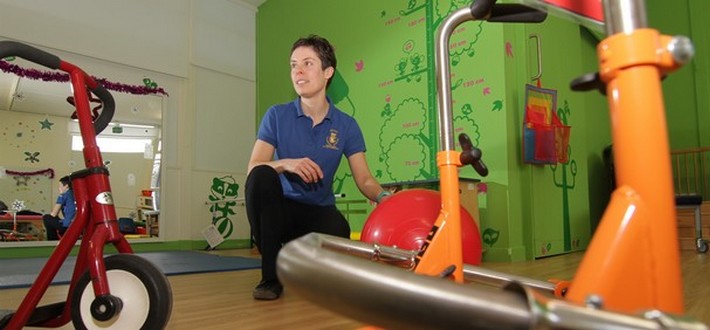Movement
Your child's movement skills refer to their control of their head, limbs and body, sitting, crawling, walking, running, jumping and hopping.

Movement development stages
This is the typical sequence of developing movement skills according to average ages:
- Newborn - even posture when lying down, with arms and legs slightly bent at elbows and knees, their heads will fall back a little when pulling to sitting from lying
- 6-8 weeks - raises head and looks up when placed on their front
- 6-8 months - sits without support
- 8-9 months - crawling on all fours
- 10-11 months - stands up and walks around holding onto furniture (cruising)
- 12-15 months - walks independently, initially unsteadily with their legs apart and arms out, but increasingly more confidently.
Note: there is a range of normal ages at which children may acquire these skills but, it is only a rough guide and all children develop at a different rate.
Please see following section on when you should be concerned.
The pattern of movement development from being immobile to walking may also vary. Most children achieve walking via crawling (80%), others bottom-shuffle and others commando crawl (with their tummy on the floor), some just stand up and walk.
Bottom shuffling children tend to walk later than those who crawl on all fours.
What can I do with my child?
For your baby:
- Lay your baby on their tummy for short periods daily when they are awake (NOT asleep) and put a couple of toys near them. This helps develop their head, neck and upper body strength
- As your baby's muscle strength increases, support them to sit up and use toys to encourage them to roll and reach
- Provide lots of safe space for your baby to move and explore under supervision
- Support your baby in an upright position on their feet and put them close to things that will encourage them to pull themselves up on safely
For your toddler/child who is close to or able to walk:
- Provide lots of space for your child to move and explore under supervision
- Provide toys that your child can push or pull safely and balls for them to kick, roll and throw.
- Encourage your child to run and explore in a safe space - as your child gets older and their confidence grows, this may include supporting them to climb up and down stairs safely, climb on play equipment or ride a bike
- Note - baby bouncers and walkers do not help your baby learn to balance or walk




